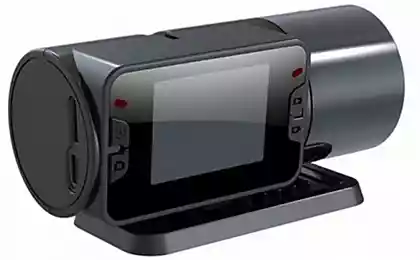599
Full body or split: which is better
Another cornerstone of strength training: full body (exercise to all muscle groups) or split (mon - legs, Wed - back, Fri - chest)? What is more effective, for what purposes, for whom and under what circumstances. Fitness expert again rummaging in the scientific literature and makes clear calculations.
Full body — beginningfirst we need to stress that almost all of us respected fitness experts in one voice say: for a beginner it is necessary to prescribe the full body. In an interview with the expert FPA Sergei Strukov told me that the first months in the room is familiar with the equipment and mastering the technique of basic exercises.

Training for the novice from the experts respected LJ community also represents a full body workout. So for beginners, adepts of strength training warmly recommended to cool down and not rush to follow the example of some hardcore athletes.
But back to the scientific data available on this topic.

The same scientist brad schönefeld, dozens of studies to which we refer.
For example, there is research scientist and coach brad Schönefeld, which was attended by 20 athletes male, approximately 23-25 years old.
Athletes were divided into two groups, one trained whole body 3 times a week (one exercise for a muscle group) and the other each muscle group 1 time per week. The study found that the thickness of some muscles increased more than the group who trained all over body workout 3 times a week, but the strength (one repetition maximum in the bench press) in both groups were the same .
We will not make far-reaching conclusions one of this study, as there are too little data: small sample with a large veroyatnosti error, and unknown other conditions of the training exercises, what is the workload and the number of approaches was done — all that matters.
The benefits of exercise on the system of full bodyTrainer from USA Joel Marin puts forward 4 arguments in favor of training on the system of full body:
More frequent study of muscle groups: the more often you train a muscle group the better and faster it grows. Practicing according to the system of full body training can load the muscle 2-3 times a week. A large consumption of energy for the workout: training the whole body during exercise, athletes consume enormous amounts of energy, as such conditions are included in the work all the muscle groups of our body. What takes more energy – heavy training of arms or training that consists of heavy squats, bench press, dips and pull-UPS? Due to the large energy consumption, athletes can gain more quality muscle mass due to the powerful fat burning effect of exercises on full body. The stronger muscle exhaustion, the greater the supercompensation: after a good fullbody-workout body athlete is exhausted and in ideal conditions take necessary to restore nutrients. A more powerful anabolic response: the more muscles involved in the training session, the more increases the level of testosterone in the blood.
The advantages of splitJoel Marin has also made 3 argument in favor of the split:
The less fatigue, so with larger weight can be used in the program full body training will not just meet multimaterial exercises, following each other in full force. The athlete will not be able to give their full strength in the bench press barbell over your head, when it performed a heavy bench press and thereby load the front beams of the deltoid muscle. Therefore, training each muscle separately large weights in different training days, you can achieve greater muscular overload that will lead to better muscle growth and strength. More attention taken separately muscle group: needless to say that, training two muscle groups per workout instead of the whole body, these two muscle groups receive much more attention than the whole body at a time. Despite all the advantages of full body training only because of the splits can be achieved point of development of each muscle group. Less chance of overtraining: training of the whole body exhausting more than training 1-2 muscle groups. Doing long on the system of full body without proper rest to overtraining. Fullbody — for the beginner, the split — for experienced lifters?The obvious conclusion in the headline is not the only correct view. For example, a sports physiologist and fitness trainer from Switzerland Marco Toigo considers unfair the conventional wisdom that beginners should train the entire body in one day, and athletes intermediate to advanced athletes — go to the splits. In his opinion form of training has nothing to do with the training experience of the athlete.

Coach Marco Toigo
The growth of a particular muscle, e.g., bicep, caused by mechanical and metabolic stimuli that occur in the biceps through proper training. Thus no matter how an athlete trains the biceps, alone or together with legs. It has no benefits for muscle growth, if you correct it a bit.
Muscles are designed to move as a single unit. Our body is a unified whole, and therefore need to train him accordingly. Isolation of certain muscles can lead to General weakness of the whole body, in spite of their impressive size. Overall athleticism can increase the only training on full body .
Another major study, conducted in Sweden, University of Gothenburg revealed that muscle hypertrophy is best suited exercise, in which muscle group is loaded with 30-60 reps 2-3 times a week.
This volume of training can be achieved in two ways:
Exercising 2-3 times per week full body system, making 1-3 approach to the muscle group. Practicing the split system, loading a muscle group twice a week. However, in this case, you will have to train 4 times a week, alternating workout for upper body and lower body (Monday and Thursday training upper body Tuesday and Friday – low). In the end, no matter what training system you use. Any training scheme will work, if it has complied with the foregoing principles.
Conclusions:a total-body Workout at a time and training on a split system, have their advantages and disadvantages.
How to train depends on you, your personal preferences, your time and your recovery capabilities.
Want to increase overall athleticism? Do full body. Want to make more prominent certain body part? Do the split.
If you are an experienced athlete and you are in a heavy training period, you can do more emphasis on the split, to be able to load more muscles and give them more time to recover.
If you are a beginner, we recommend starting with full body, you're not working at maximum load will quickly master the technique and you will improve faster.
Ideally, you should combine and alternate different training approaches, focusing on their advantages and disadvantages.
P. S. And remember, only by changing their consumption — together we change the world! © Join us at Facebook , Vkontakte, Odnoklassniki
Source: zozhnik.ru/full-body-ili-split-chto-luchshe/
Full body — beginningfirst we need to stress that almost all of us respected fitness experts in one voice say: for a beginner it is necessary to prescribe the full body. In an interview with the expert FPA Sergei Strukov told me that the first months in the room is familiar with the equipment and mastering the technique of basic exercises.

Training for the novice from the experts respected LJ community also represents a full body workout. So for beginners, adepts of strength training warmly recommended to cool down and not rush to follow the example of some hardcore athletes.
But back to the scientific data available on this topic.

The same scientist brad schönefeld, dozens of studies to which we refer.
For example, there is research scientist and coach brad Schönefeld, which was attended by 20 athletes male, approximately 23-25 years old.
Athletes were divided into two groups, one trained whole body 3 times a week (one exercise for a muscle group) and the other each muscle group 1 time per week. The study found that the thickness of some muscles increased more than the group who trained all over body workout 3 times a week, but the strength (one repetition maximum in the bench press) in both groups were the same .
We will not make far-reaching conclusions one of this study, as there are too little data: small sample with a large veroyatnosti error, and unknown other conditions of the training exercises, what is the workload and the number of approaches was done — all that matters.
The benefits of exercise on the system of full bodyTrainer from USA Joel Marin puts forward 4 arguments in favor of training on the system of full body:
More frequent study of muscle groups: the more often you train a muscle group the better and faster it grows. Practicing according to the system of full body training can load the muscle 2-3 times a week. A large consumption of energy for the workout: training the whole body during exercise, athletes consume enormous amounts of energy, as such conditions are included in the work all the muscle groups of our body. What takes more energy – heavy training of arms or training that consists of heavy squats, bench press, dips and pull-UPS? Due to the large energy consumption, athletes can gain more quality muscle mass due to the powerful fat burning effect of exercises on full body. The stronger muscle exhaustion, the greater the supercompensation: after a good fullbody-workout body athlete is exhausted and in ideal conditions take necessary to restore nutrients. A more powerful anabolic response: the more muscles involved in the training session, the more increases the level of testosterone in the blood.
The advantages of splitJoel Marin has also made 3 argument in favor of the split:
The less fatigue, so with larger weight can be used in the program full body training will not just meet multimaterial exercises, following each other in full force. The athlete will not be able to give their full strength in the bench press barbell over your head, when it performed a heavy bench press and thereby load the front beams of the deltoid muscle. Therefore, training each muscle separately large weights in different training days, you can achieve greater muscular overload that will lead to better muscle growth and strength. More attention taken separately muscle group: needless to say that, training two muscle groups per workout instead of the whole body, these two muscle groups receive much more attention than the whole body at a time. Despite all the advantages of full body training only because of the splits can be achieved point of development of each muscle group. Less chance of overtraining: training of the whole body exhausting more than training 1-2 muscle groups. Doing long on the system of full body without proper rest to overtraining. Fullbody — for the beginner, the split — for experienced lifters?The obvious conclusion in the headline is not the only correct view. For example, a sports physiologist and fitness trainer from Switzerland Marco Toigo considers unfair the conventional wisdom that beginners should train the entire body in one day, and athletes intermediate to advanced athletes — go to the splits. In his opinion form of training has nothing to do with the training experience of the athlete.

Coach Marco Toigo
The growth of a particular muscle, e.g., bicep, caused by mechanical and metabolic stimuli that occur in the biceps through proper training. Thus no matter how an athlete trains the biceps, alone or together with legs. It has no benefits for muscle growth, if you correct it a bit.
- If the athlete is poorly trained, no split or full body workout will not bring any result.
- Properly drafted and executed training plan on full body can give a trainee more than a defective split-training and Vice versa.
- People with outstanding genetic potential will be able to achieve much more, training the entire body in just one exercise for each muscle group, than people with not very good potential, which has a split system .
Muscles are designed to move as a single unit. Our body is a unified whole, and therefore need to train him accordingly. Isolation of certain muscles can lead to General weakness of the whole body, in spite of their impressive size. Overall athleticism can increase the only training on full body .
Another major study, conducted in Sweden, University of Gothenburg revealed that muscle hypertrophy is best suited exercise, in which muscle group is loaded with 30-60 reps 2-3 times a week.
This volume of training can be achieved in two ways:
Exercising 2-3 times per week full body system, making 1-3 approach to the muscle group. Practicing the split system, loading a muscle group twice a week. However, in this case, you will have to train 4 times a week, alternating workout for upper body and lower body (Monday and Thursday training upper body Tuesday and Friday – low). In the end, no matter what training system you use. Any training scheme will work, if it has complied with the foregoing principles.
Conclusions:a total-body Workout at a time and training on a split system, have their advantages and disadvantages.
How to train depends on you, your personal preferences, your time and your recovery capabilities.
Want to increase overall athleticism? Do full body. Want to make more prominent certain body part? Do the split.
If you are an experienced athlete and you are in a heavy training period, you can do more emphasis on the split, to be able to load more muscles and give them more time to recover.
If you are a beginner, we recommend starting with full body, you're not working at maximum load will quickly master the technique and you will improve faster.
Ideally, you should combine and alternate different training approaches, focusing on their advantages and disadvantages.
P. S. And remember, only by changing their consumption — together we change the world! © Join us at Facebook , Vkontakte, Odnoklassniki
Source: zozhnik.ru/full-body-ili-split-chto-luchshe/























